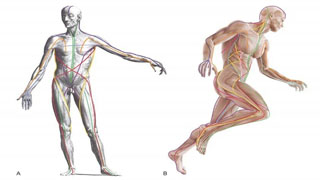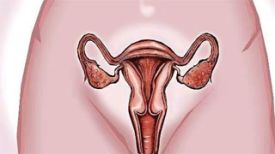
Anterior cruciate ligament injury
The anterior cruciate ligament, also known as the anterior cruciate ligament, is one of the biggest injuries affecting professional football players. It is connected at one end to the anterior side of the tibia of the calf and at the other end to the posterior side of the femur of the thigh. When the ligament tightens, it can prevent knee joint instability caused by excessive forward translation of the calf and maintain knee joint stability.
The common injury mechanism is that the knee joint undergoes deceleration movements during twisting movements, such as sudden stops, sharp turns, variable speed turns, or facing the opposing player's foot. Many people hear a "pop" sound when their anterior cruciate ligament ruptures, accompanied by severe pain in the knee joint, followed by swelling of the knee joint. Chronic injuries can also cause knee joint misalignment and leg weakness.
How should we handle this situation urgently? Everyone can remember the RICE four step method: Rest, ICE, Compression, and Elevation. At the same time, it is necessary to seek medical attention at the sports medicine department as soon as possible, and have a comprehensive physical examination of the knee joint by a doctor. If necessary, magnetic resonance imaging examination should be performed to make accurate judgments.
Can anterior cruciate ligament injury heal on its own? Unfortunately, anterior cruciate ligament injuries cannot heal on their own. Because ligaments and bones are connected by fibrocartilage tissue, it is difficult for fibrocartilage tissue to regenerate after injury; On the other hand, because the joint fluid flowing in the joint cavity hinders the connection between the broken end of the ligament and the bone, even if the ligament and bone are successfully connected by scar, the strength that the anterior cruciate ligament can withstand is greatly reduced, and the stability of the knee joint is also greatly compromised.
If you are still young and have a need for exercise, it will not affect knee joint movement in the short term. However, due to the instability of the joints, it can lead to meniscus (joint cushion) damage, cartilage damage (joint lubricant), causing knee joint pain, interlocking and other symptoms, which not only affect exercise and life, but also may cause early onset of osteoarthritis. If we wait until these symptoms appear before treating them, firstly, the treatment effect will deteriorate, and secondly, it will cost more. So it is recommended that everyone still follow the doctor's advice and undergo surgery if necessary.
As ordinary football enthusiasts, what should we pay attention to in our daily exercise?
Scratches and abrasions
Scratches are also a very common form of injury on the football field. Due to the special form of football, the soles of football shoes are equipped with studs, so scratches on the field are largely caused by other people's studs. There is also a type of abrasion that specifically occurs on the field, which is caused by sharp objects worn by others.
How can we avoid abrasions on the field?
But if we unfortunately suffer from abrasions, there is no need to worry. The first thing we need to do is disinfect the scratched area to avoid infection. After confirming the completion of disinfection, it can be allowed to rest and wait for the scab to recover. It should be noted that if there are any abrasions on the field, please rest immediately at the sidelines. Although the abrasion is a skin injury, the deformation caused by the abrasion may lead to further secondary injuries.
sprain
A sprain is essentially an acute injury to the joints and surrounding ligament tissues, most commonly in the ankle, knee, and wrist joints. There are also many reasons for sprains on the field. In short, if you want to avoid sprains, you need to strengthen your physical fitness and learn to protect yourself.
How should I handle a sprain (without skin damage)?
Finally, let's talk about 'habitual ankle sprains', which are caused by excessive joint relaxation, poor body coordination, and old ligament injuries, while the root cause is incomplete recovery from the previous injury. So, take good care of your injuries.
Muscle injury
In this World Cup, French player Benzema withdrew early from training due to a left quadriceps muscle injury. Muscle injury may seem like a minor issue, but improper handling can actually affect athletic performance and even lead to serious consequences. After being pulled, once the muscle fibers tear, only scar healing will occur, and it is almost impossible for them to regenerate into their original normal form. If not handled properly, tearing and recurrence are prone to occur again during subsequent exercise, which can sometimes be fatal for professional athletes.
The muscles behind the thighs, also known as the hamstring muscles. Muscle strain is usually caused by excessive external force pulling on the muscle. During exercise, when lifting the leg to start, the hamstring muscles will slow down the forward swinging calf. When the foot is in place, it pulls and stretches the back of the hip as much as possible to straighten the hip joint. Before stepping onto the ground, the hamstring muscles are pulled to the maximum extent, making them more susceptible to injury.
What are the typical symptoms of hamstring strain?
Early treatment is crucial for hamstring injuries. The best time for treatment is within 48 hours after injury. If similar symptoms occur during exercise, it is recommended that you immediately seek medical attention from a sports trauma specialist after completing First Aid to determine the severity of the injury and treatment plan. Generally, mild hamstring strains can recover within a few weeks, while severe ones may take at least 6 weeks or even longer. During the recovery period of treatment, all activities that may cause pain in the hamstring muscles should be stopped, otherwise the symptoms may recur and not heal.
One of the important ways to prevent hamstring injuries is to properly warm up before exercise. By distinguishing between muscle tension points and weak points, regular deep tissue exercise massage can help prevent muscle strain and relaxation. Proper and reasonable use of intramuscular binding can protect muscles from excessive stretching during exercise and reduce the risk of injury.
At present, the Qatar World Cup has entered its final stage, allowing us to enjoy the game while also learning some knowledge about football injuries. After all, as the old saying goes on the field, playing football is not about how magnificent your peak is, but about how long you can play football. As sports enthusiasts, we should also prevent injuries during regular football matches. Once a sports injury occurs, we should know how to self identify, handle it correctly, seek medical attention early, and enjoy the fun of football scientifically and healthily!


